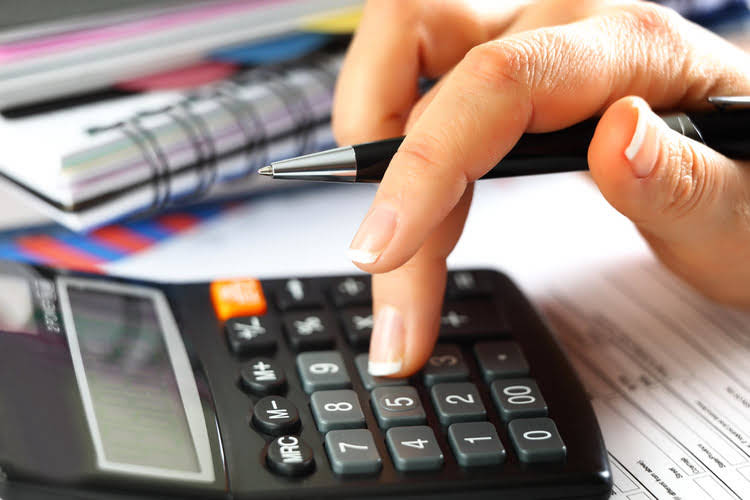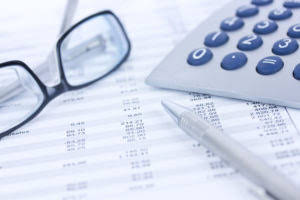Before we dive in, consider the stockholder’s equity section from Realty Income Corporation’s 2014 balance sheet. Generally speaking, stocks with smaller floats will experience more volatility than those with larger floats. These statements are available on companies’ investor relations pages or the SEC website. The information is also available on stock data websites like Stock Analysis. Evaluating the trend of this number provides useful insights to investors.
- In these types of scenarios, the management team’s decision to add more to its cash reserves causes its cash balance to accumulate.
- Comparing EPS in absolute terms may not have much meaning to investors because ordinary shareholders do not have direct access to the earnings.
- Outstanding shares differ from treasury shares, which are the shares held by the company itself and which cannot be sold in the open market.
- Different scenarios for calculating the weighted average of outstanding shares are shown in the following examples.
- If the same assumptions are applied for the next year, the end-of-period shareholders equity balance in 2022 comes out to $700,000.
- And so, for a loss-making company, potentially dilutive shares can be excluded if they are “anti-dilutive”.
EPS and Dividends
Total shares outstanding decreased from more than 21 billion in 2016 to less than 17 billion in 2020. The tech company spent billions buying back its stock during these years. Here, the balance sheet reports 8,019 million shares issued and 3,901 million treasury shares, as of September 30, 2022. Knowing a company’s number of shares outstanding is key when calculating critical financial metrics and determining share value as a portion of ownership.
How to Find Number of Shares Outstanding
You can do that by navigating to the company’s investor-relations webpage, finding its financial reporting, and opening up its most recent 10-Q or 10-K filing. Many companies buy back shares as part of their capital allocation strategy. When a company buys back its own shares, that stock is accounted for as “treasury stock” on its balance sheet. Treasury stock is no longer outstanding — the company itself now owns it, not an investor or employee, but it has still been issued. Any stock dividends or splits that occur must be reflected in the calculation of the weighted average number of shares outstanding.
It shows what your stake in the company is
In these types of scenarios, the management team’s decision to add more to its cash reserves causes its cash balance to accumulate. Earnings per share (EPS) is an important profitability measure used in relating a stock’s price to a company’s actual earnings. In general, higher EPS is better but one has to consider the number of shares outstanding, the potential for share dilution, and earnings trends over time. If a company misses or beats analysts’ consensus expectations for EPS, its shares can either crash or rally, respectively. When looking at EPS to make an investment or trading decision, be aware of some possible drawbacks. For instance, a company can game its EPS by buying back stock, reducing the number of shares outstanding, and inflating the EPS number given the same level of earnings.
- Our work has been directly cited by organizations including Entrepreneur, Business Insider, Investopedia, Forbes, CNBC, and many others.
- In the row directly below this line, select the ending date of the period you are calculating outstanding shares for.
- Corporations raise money through an initial public offering (IPO) by exchanging equity stakes in the company for financing.
- This figure is important because it translates a company’s overall performance into per-share metrics, making an analysis much easier regarding a stock’s market price at a given time.
- It is more accurate to use a weighted average number of common shares over the reporting term because the number of shares can change over time.
- 11 Financial is a registered investment adviser located in Lufkin, Texas.
Understanding how to calculate outstanding shares for a public company would appear to be a simple matter. Overall, the number of shares outstanding, the metrics you can calculate from it, and related metrics — like the float — provide key insights to investors. Other companies may explicitly list their outstanding shares as a line item in the equity section of their balance sheet. For example, when shares outstanding are going up, the ownership stake of shareholders is diluted. And when shares are bought back, investors end up owning more of the company. An additional metric used alongside shares outstanding is a company’s “float,” which refers to the shares available for investors to buy and sell on the open market.
Outstanding shares can also be used to calculate some key financial metrics, including a company’s market cap and its earnings per share. They are separate from treasury shares, which are held by the company itself. A company’s number of shares outstanding refers to the total amount of shares it has issued. Not only does this include the shares available to be bought and sold by the public, but also included in this number are the restricted shares held by institutional investors and company insiders. The weighted average shares outstanding figure smooths out this variance, by simply averaging the share count across the reporting period. This is a figure calculated by the company itself; investors literally do not have the access to the data required.
- In certain cases, notably for companies that are aggressively issuing shares or debt, public data should be augmented with a reading of SEC filings.
- If you’re interested in learning about common stock, you may also in learning about the best broker available for your needs, so visit our broker center to discover the possibilities.
- If you would like to save the current entries to the secure online database, tap or click on the Data tab, select “New Data Record”, give the data record a name, then tap or click the Save button.
- If shareholders’ equity is positive, that indicates the company has enough assets to cover its liabilities.
- We will use 562,500 because in the above calculation, we assigned weights according to the time proportion that the share outstanding figure was unchanged.
- The shares companies issue are known as authorized shares, which are the maximum number of shares they are lawfully permitted to make available to investors.
Investors can compare the EPS of Bank of America with other financial institutions, such as JP Morgan Chase (JPM) or Wells Fargo (WFC), to get an idea of relative financial strength. Ariel Courage is an experienced editor, researcher, and former fact-checker. She has performed editing and fact-checking work for several leading finance publications, including The Motley Fool and Passport to Wall Street. Upgrading how to calculate outstanding shares of common stock to a paid membership gives you access to our extensive collection of plug-and-play Templates designed to power your performance—as well as CFI’s full course catalog and accredited Certification Programs. The larger stock market is made up of multiple sectors you may want to invest in. Volatility profiles based on trailing-three-year calculations of the standard deviation of service investment returns.




